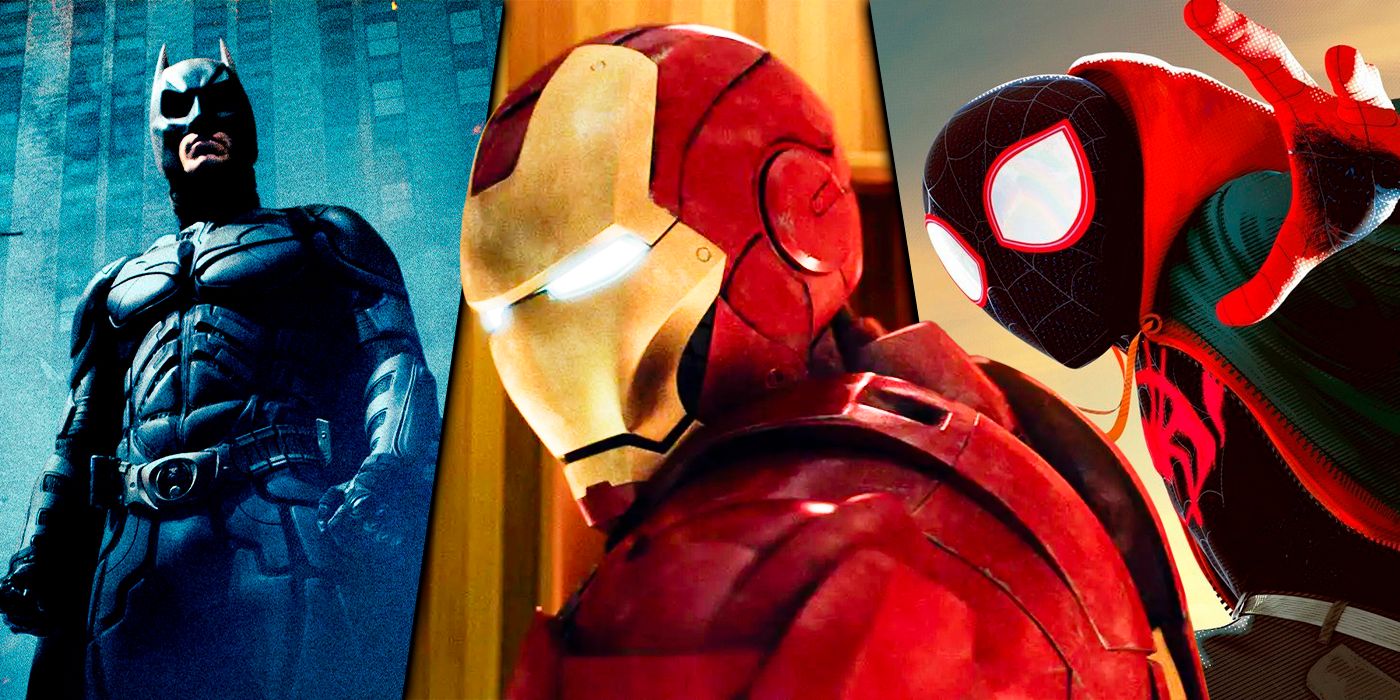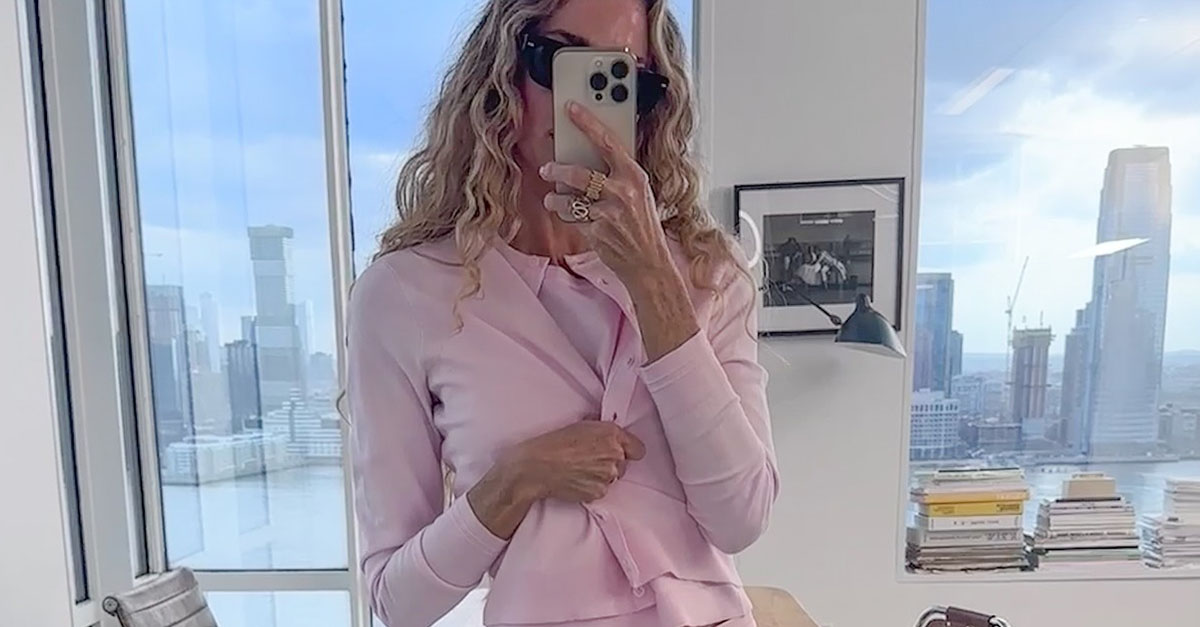Superhero comic books are a remarkably unique phenomenon. They're high-concept morality tales, where the depths of the human condition are given colorful costumes and garish codenames. They're also cultural time capsules, capturing moments and attitudes frozen in time.
All good art reflects the culture it came from, and if it doesn't reflect the facts, it can still reflect the truth. And the truth is that not all art can be talked about the same, especially comic book movies. Some films are popular but incredibly forgettable, gone from the minds of audience-goers as soon as they leave the theater. Then there are the ones that, beloved or not, leave a lasting impression, with themes and impact that linger for years.
The Teenage Mutant Ninja Turtles have been pushing the comic book landscape forward since their debut in 1984. While most modern audiences might attribute the rise of comic book movies to Marvel and DC, with beloved entries like Richard Donner's Superman, Fox's X-Men, or Sam Raimi's Spider-Man, those praises risk overlooking the films that paved the way for the mega-successes fans love today. In particular, much of the modern superhero landscape owes its longevity to , a film that brought the heartfelt and fun world of the Turtles to life despite its lower budget.
After their original Mirage comics gave way to a massively successful animated series and toy line, it seemed logical that the next place to take the Heroes in a Half Shell was the big screen. Rather than creating a brand-new story drawn from the cartoon, the creative team behind the film chose to adapt several issues of the original comic run, allowing for an authenticity in characters and tone that many comic book movies ignore in favor of pop-culture references. By virtue of coming from a third-party comic, neither Marvel nor DC, the Turtles’ theatrical debut helped make the case for the broad appeal of comic books to all audiences.
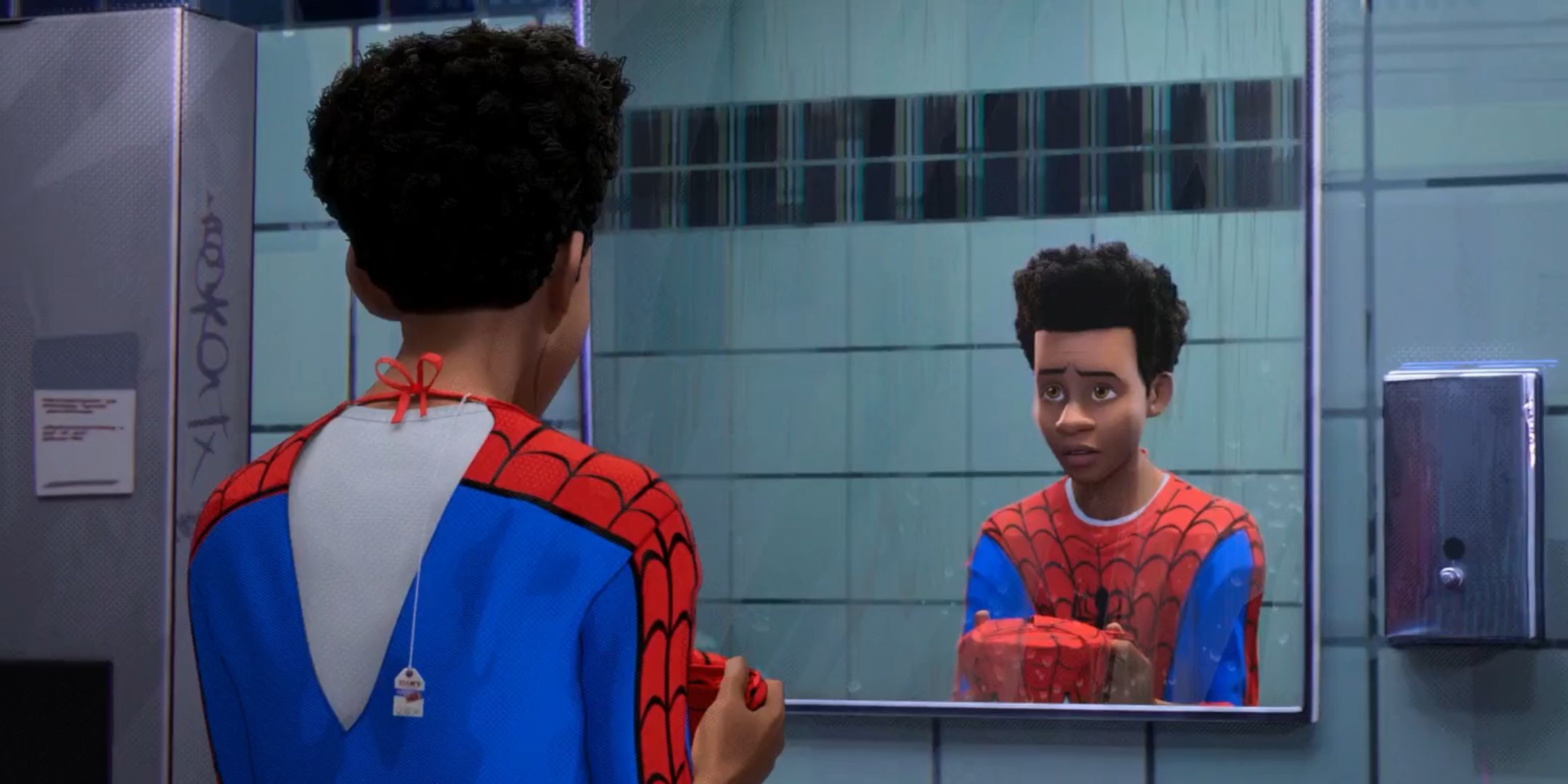
Spider-Man: Into the Spider-Verse is a highly beloved, critically acclaimed film for several reasons. Its bright, vibrant, and expressive art pairs perfectly with bold, energetic colors, making the world feel like a comic book come to life. It also serves as a remix and reinterpretation of the 2014 story of the same name, which brought various Spider-People together. The original Spider-Verse was a comic event starring an already established Peter Parker, whereas the film acts as Miles Morales' origin story. Most notably, it throws out nearly everything about Miles from the original comics and creates a much stronger character in the process.
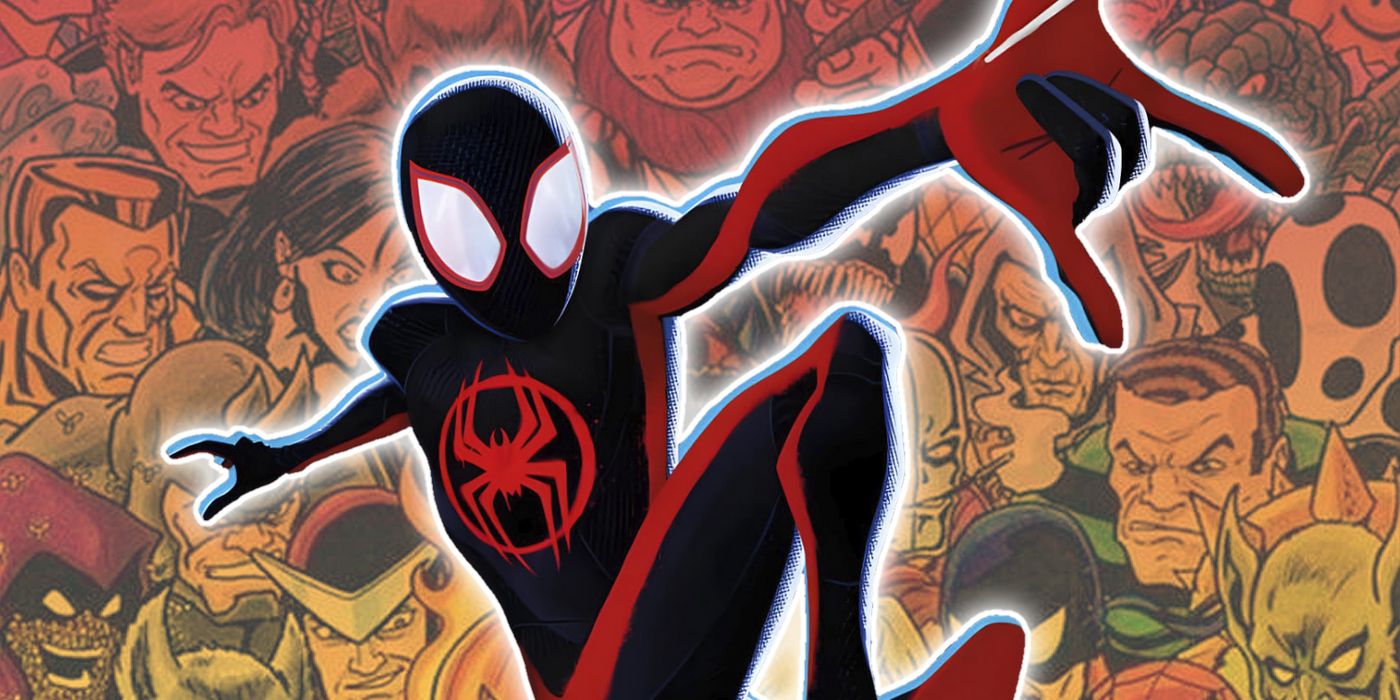
Related
Across the Spider-Verse: 15 Villain Variants Perfect For Spider-Verse 3
The Spider-Verse has many different versions of famed villains, some bizarre and some compelling, and many of them would be amazing in Spider-Verse 3.
Characters are defined by what they say and do. That's how characterization is determined, through actions and words. , is known in the comic book industry for his down-to-earth characterization, but comic book Miles isn't as interesting as he could be. He struggles with living up to Peter's legacy, but that identity crisis becomes his entire character. Movie-Miles, on the other hand, is given an extended cast to bounce off of and a sense of identity that's strengthened by his powers, not swallowed by them. The film makes a clear, unapologetic statement: Miles Morales is, and always will be, Spider-Man.
Tony Stark, the Invincible Iron Man, is one of the most popular superheroes of all time, thanks to the MCU. Before the rise of the Marvel Cinematic Universe, Iron Man and his fellow Avengers were stuck in obscurity. Compared to eternally popular colleagues like Spider-Man, the Hulk, and the X-Men, Iron Man was very much seen as a B-tier superhero. Robert Downey Jr.'s charismatic, sarcastic, and layered portrayal of the golden avenger changed all of that. Suddenly, Iron Man was the face of the Marvel Universe and a tangible argument for the grounded realism of sci-fi. People can be very accepting of anything, even a metal suit of battle armor, if they're shown the process of its construction.
For all the praise this movie has earned, including , there are still several points that keep it from reaching the beloved heights of other entries in the genre. Tonally, it's planted in its pro-military, anti-terrorism messaging, but what ends up on screen is that every brown character is portrayed as a terrorist, with Rhodey being the only exception as he's in the military. Truthfully, the biggest strike against the film is the unfinished script they began shooting with. After the first Iron Man action sequence, the movie essentially falls asleep and stumbles to the finish line.
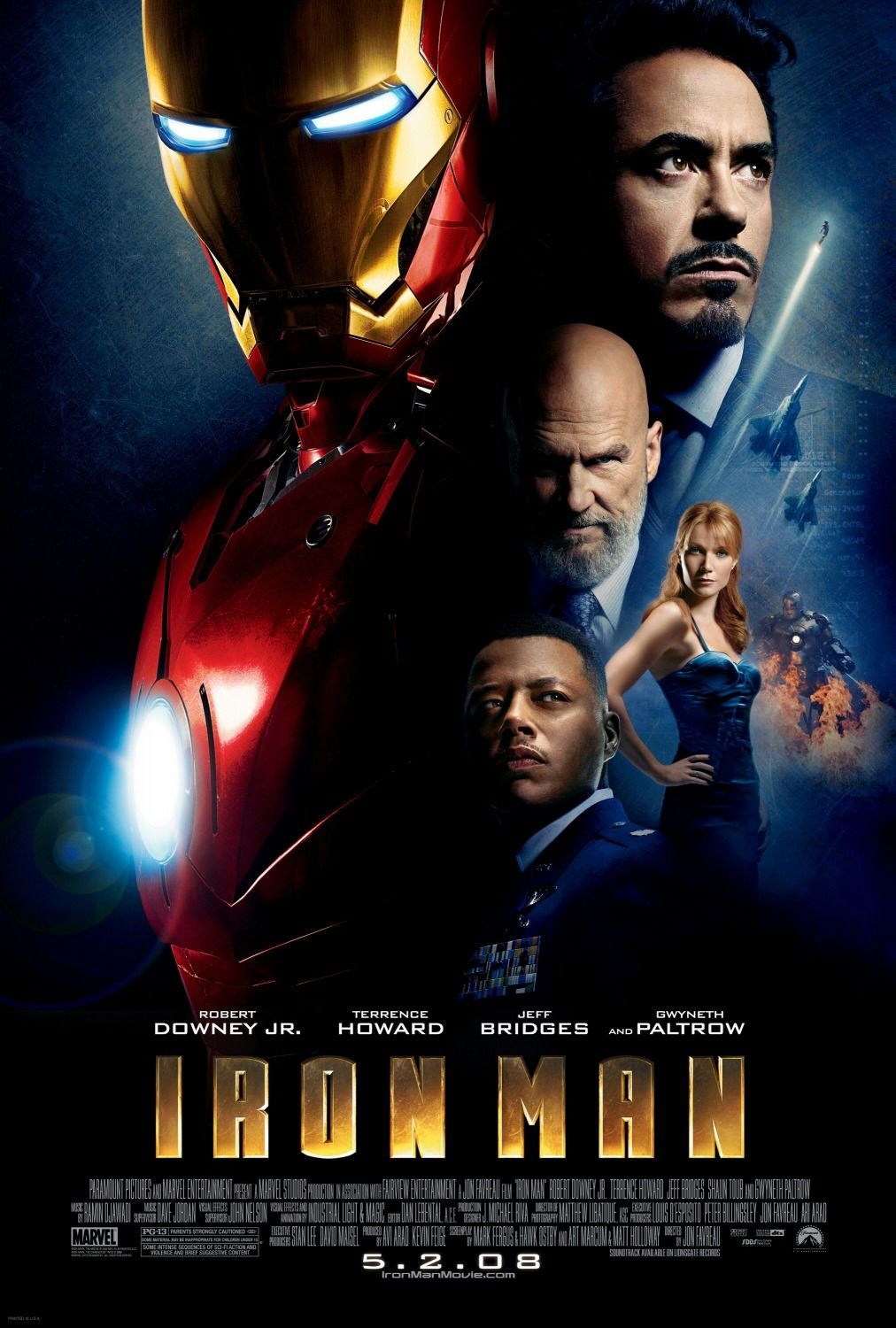
, during the acclaimed run by writer Chris Claremont. His time with the merry mutants began in the mid-1970s when the book was relaunched with a new team of international mutants after years of obscurity. It's essential to understand that Claremont's stories didn't tell the first tales of the X-Men, but rather the early days of this new team, featuring fan favorites like Storm, Nightcrawler, and Wolverine. The tales of this era, such as the Dark Phoenix Saga and Days of Future Past, have become so beloved that all future adaptations of the X-Men act as though the Claremont era is the history of the team, with no emphasis placed on "before."
This strange eclipsing effect, this insistence by Marvel media that the X-Men didn't exist or really matter before the arrival of Wolverine and Storm, is what makes films like X-Men: First Class such a breath of fresh air. Period piece superhero movies are a rarity in the genre, and First Class takes good advantage of its international scope to bring striking scenes and visuals. While the film acts as an origin story for the X-Men, the conflict centers on the inevitable split between Magneto and Professor Xavier, with the audience's knowledge of future events making First Class a hopeful tragedy. It also arrived at the perfect time to keep the X-films in the cultural cache, as the MCU was in the midst of its historic upswing.
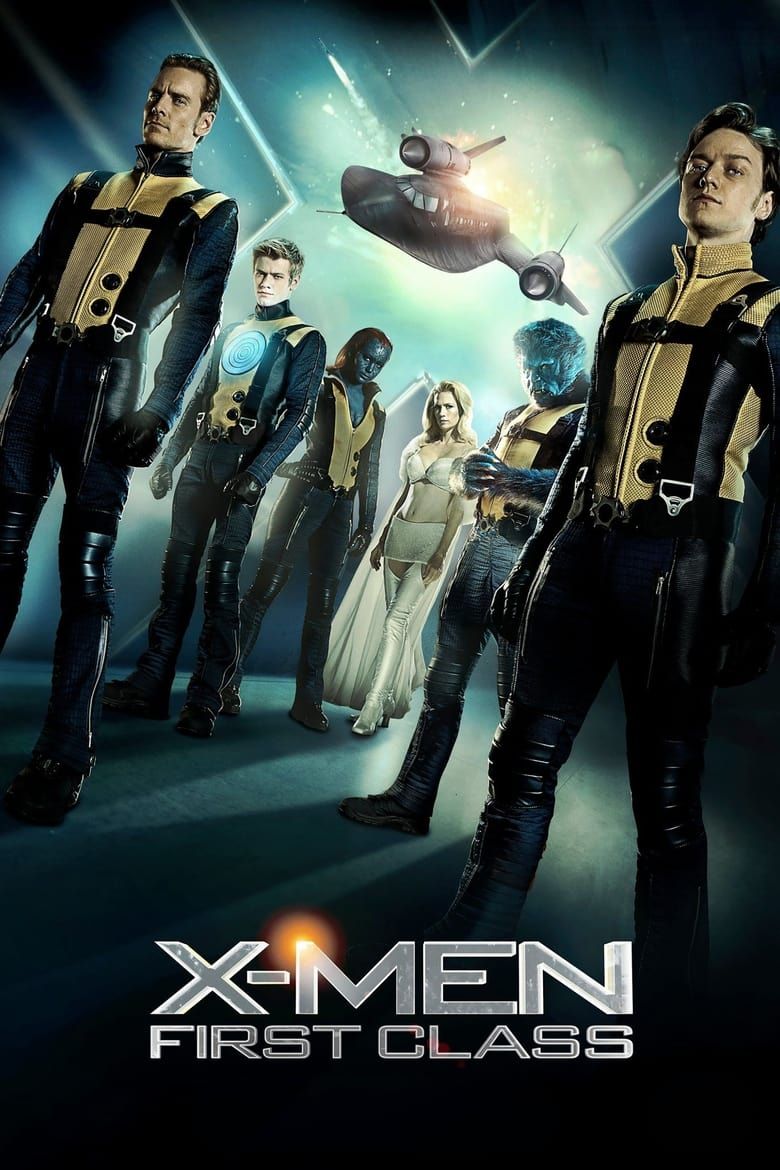
Animation is, and will always remain, the perfect medium to adapt superhero media. Projects like the MCU, the live-action Daredevil series, and the CW era of DC television will always have special places in the hearts of fans, but flesh and blood will always come second to pen and paper in the contest for superheroic display. At their best, live-action projects create a satisfying alternative to beloved stories, selectively picking and choosing what to keep. At their worst, they're soulless, empty, and so overloaded with CGI that they might as well have been animated. This delicate balance is why animated superhero films are generally accepted and argued over less than their live-action counterparts.
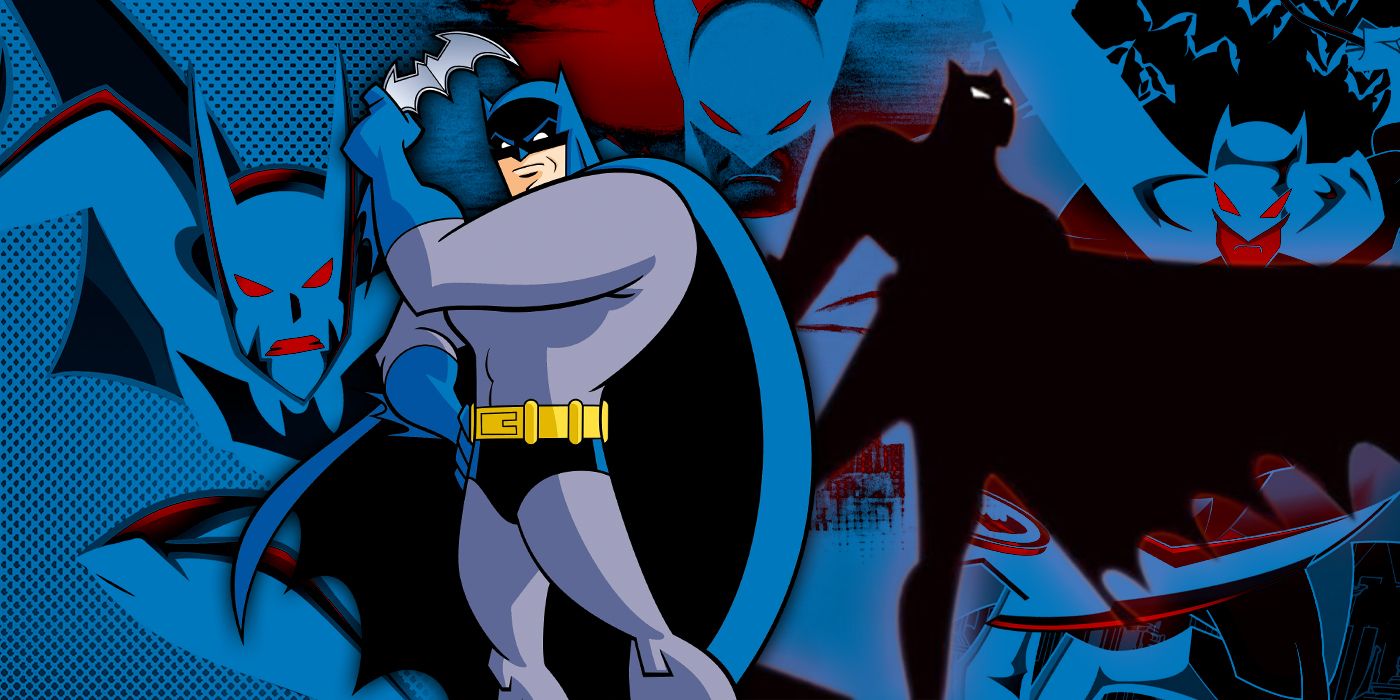
Related
Every Batman Cartoon, Ranked
From Beware The Batman to Batman Beyond, this is a ranking of every single animated Batman series so far.
The DC Animated Universe consistently drew acclaim for its deft handling of superheroes in animation. Many DCAU versions of characters are considered definitive, with Batman at the top of the list. The Dark Knight was essentially the main character of the DCAU, and finally explores his origin story. A series of murders in Gotham prompts the World's Greatest Detective to reflect on his past, all while drawing closer to the titular Phantasm. In an era that consistently devalues animation, it’s refreshing that this film is still considered one of the best Batman movies of all time and can rival most of Batman's live-action films.
Superhero movies have cultivated a reputation for being light, fluffy, and extravagant experiences that avoid offering anything that might be "upsetting" to audiences. It's true that some comic book films play it very safe, afraid to challenge viewers in ways that might hurt their box office haul. Yet there are always films that choose to put the audience in the shoes of the title character, daring them to find their own way through the situation, like in The Dark Knight. Something as simple as the trolley problem is blown up to greater heights as Batman wonders if the only way to save the day is to give in to the Joker's terrorist demands.
The Dark Knight represents one of the first times a superhero movie was more than just entertaining; it tackled moral, philosophical, and political issues without violating the core tenets of superhero stories. Central to the moviegoing experience is imagining yourself in the shoes of the main character, going where they go and doing what they do, and in a superhero film, that experience is heightened even more. Everybody wants to beat the Joker, but very few want to navigate the moral dilemmas he presents. Perhaps the most striking element of , Batman is likewise incapacitated by a foe he can't beat: public opinion.
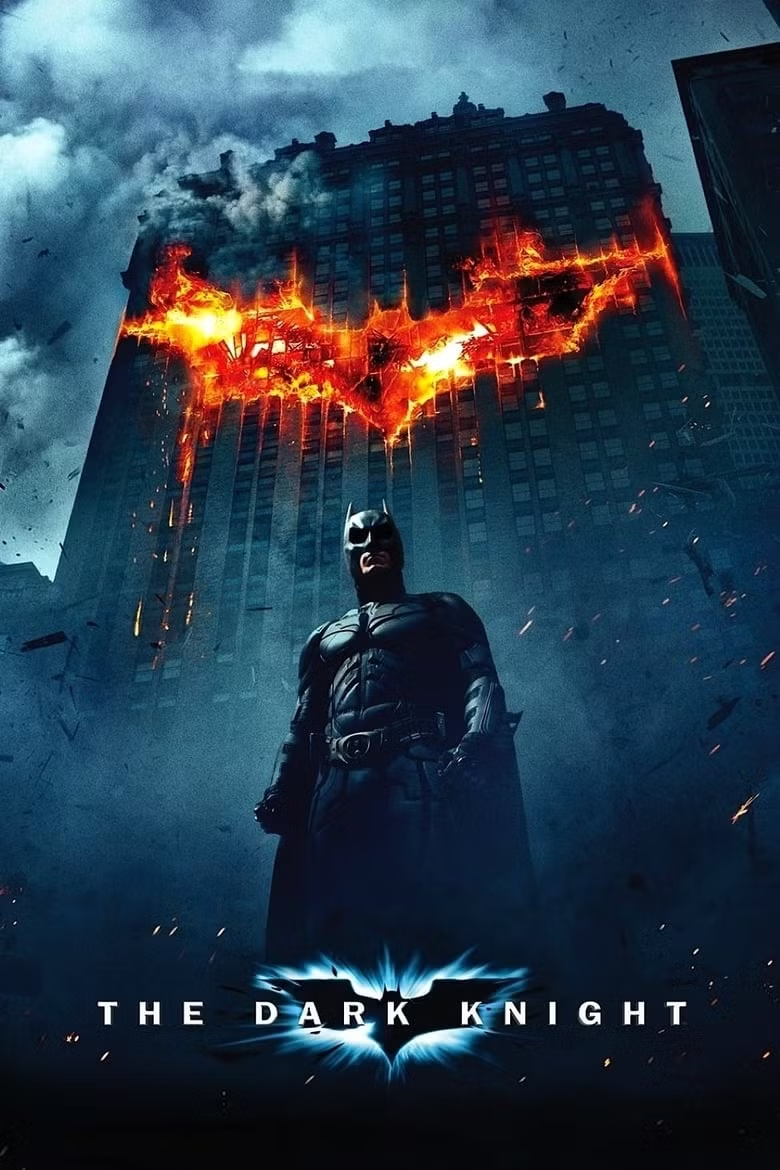
Men in Black, released in 1997, serves as a perfect example of how to adapt a comic book for a screen debut. Starring acting legends Will Smith and Tommy Lee Jones, the film follows the story of James Edwards, an NYPD officer who stumbles onto an alien conspiracy to start an interstellar war, joining the titular Men in Black. Almost thirty years and three sequels later, it is easy to see the wide-reaching appeal of the slick sci-fi comedy with Smith and Jones and perfect leading men, impressive effects and an expansive lore. Perhaps the true, underappreciated genius of the film is that it strips away a lot of the more unsavory elements of the original comic, squarely keeping its focus on a mysterious organization of black-suit-wearing agents.
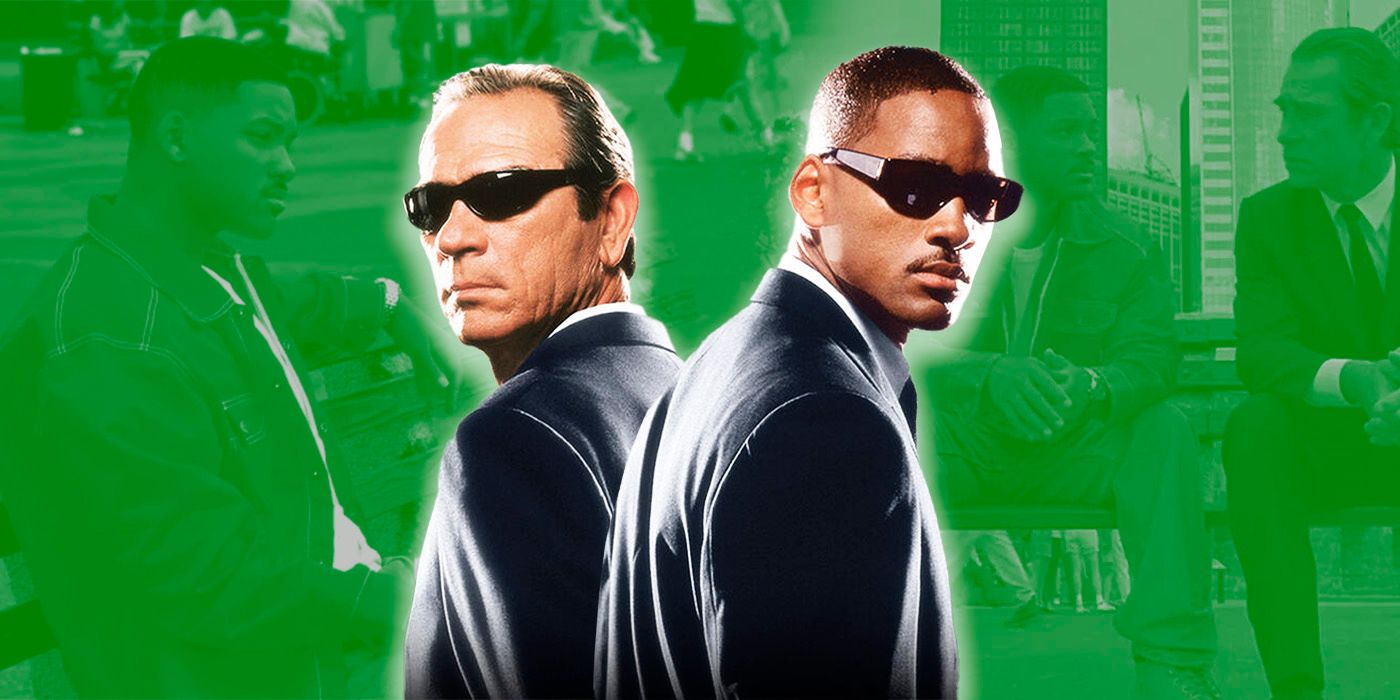
Related
28 Years Later, This Men in Black Scene Is More Prescient Than Ever
The bench scene in Men in Black is a perfect example of how a hilarious action blockbuster can still have deep, relevant themes.
or well-known of its time, originally being published by Canadian-based Aircel Comics for its three-issue run in 1990. By 1994, the comic's rights had been acquired by Marvel Comics and the original series was given one last sequel to close out its story before the film would explode in popularity. The comic world of Men in Black was bleak, with supernatural threats alongside the extraterrestrial ones and Agents killing civilians to maintain their secrecy. The clearest change can be seen in the reworking of lead character Agent Jay, originally no different from any other standard protagonist and now entirely personified by the charm and charisma of Will Smith.
There is hardly a better example of a beloved comic book movie than Richard Donner's Superman. The argument could be made that the genre wouldn't exist without the success of this film, which details the Last Son of Krypton's early days in Metropolis, due in large part to its verisimilitude. Everything in the film had to feel real and true to the world and character of Superman, so when he believed in the danger, so did the audience. There's an earnestness and authenticity to the world being presented, as if viewers had stepped out of their own and onto the comic book page. The strongest and most genuine element of the film is the Man of Steel himself, played to perfection by the late, great Christopher Reeve.
This film changed history, for Superman and for comic book movies as a whole. The tragedy is that it captured the hearts of its audience so greatly, it simply refuses to let go. The majority of people aren't able to move on from this film and its campier interpretation of Superman. When this world was revisited in 2006’s Superman Returns, it suffered from a lack of innovation, and , there was significant backlash and calls for the return of the Donner era. Things don’t survive change; they survive because of change, and Superman, on film, has not been allowed to change since 1978.
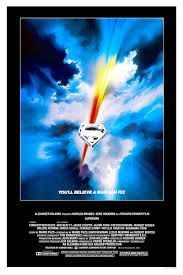
Superman
- December 15, 1978
- 143 Minutes
Spider-Man is perhaps the most popular superhero of all time. The wall-crawler has been dazzling audiences since 1962, and his various media versions have each earned their place in history, but no adaptation has been more important in the web-swinger's legacy than 2002's Spider-Man. blends all the best elements of the comic book films that came before it. The world is presented in an earnest and genuine way, in line with Superman (1978), while also drawing on the filmmaking sensibilities of 1990s Teenage Mutant Ninja Turtles, presenting a New York that feels realistic but heightened by the superheroics happening within.
All of these techniques and philosophies result in a film that’s undeniably set in the world of a comic book yet grounded by little touches that make it feel more human and accessible. Peter Parker feels awkward and shy in a way that still feels authentic, if animated, over 20 years later. Elements of this film, like many adaptations, would make their way into the comics, but it’s worth noting that its world and story are more indebted to the 1994 animated series than to any comic run. From character dynamics to iconic scenes remade shot for shot, the symbiotic relationship between the ’90s cartoon and this film only strengthens the bond shared by all comic media, creating a tangled web of inspiration.
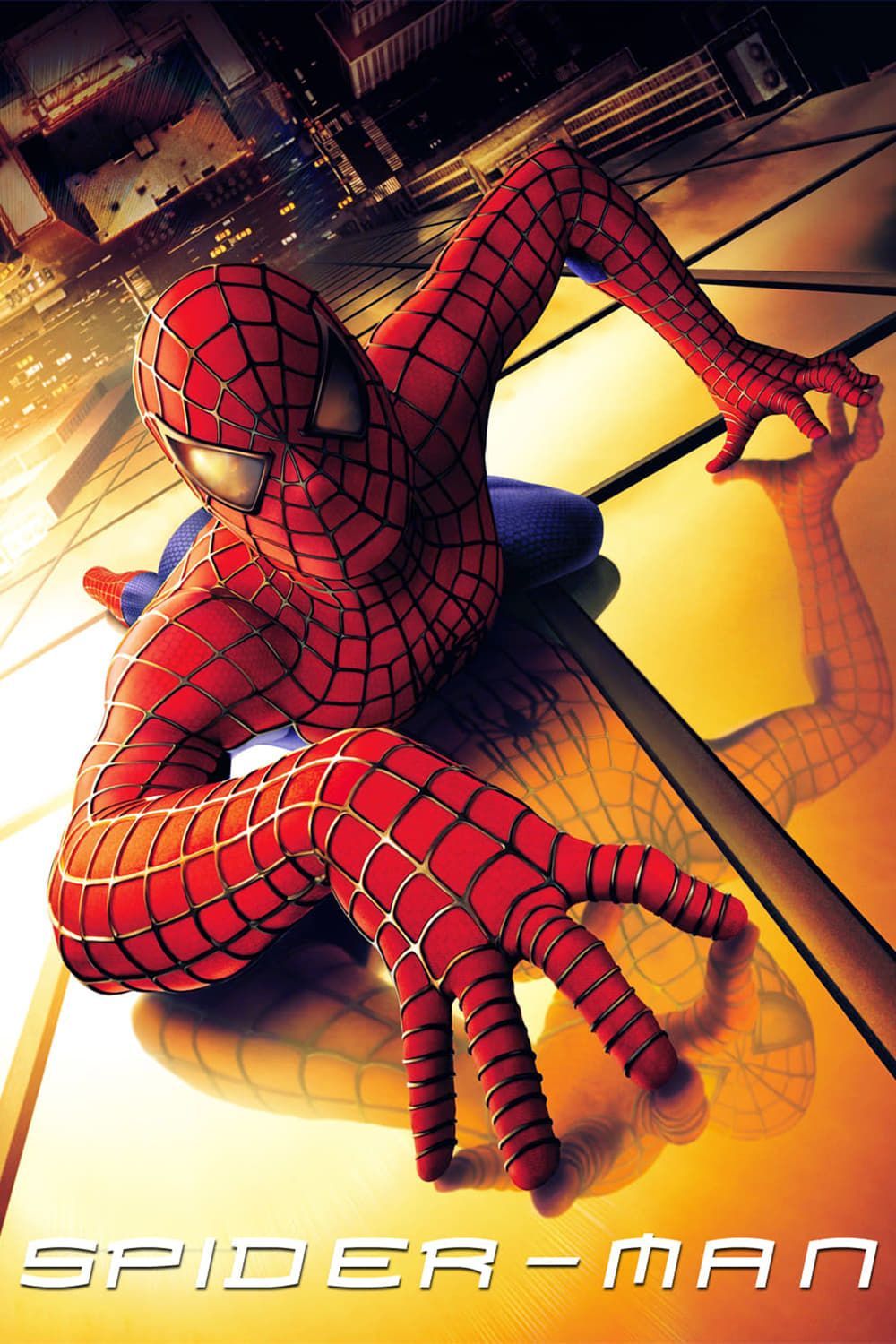
Broadly speaking, whether the medium is film, television, or comic books, art tends to have one of two effects. There’s the kind you walk away from raving and cheering, before moving on to something else—getting coffee, meeting a friend. By the time you're home, you can’t remember the name or plot of the thing you just watched. Then there’s the kind that’s unsettling or unusual. It leaves you unsure, yet you find yourself thinking about it for days, weeks, or even the rest of your life. That second kind, the one that sticks to your soul and refuses to let go, is the best kind, because it comes from the heart of the artist and stays within yours.
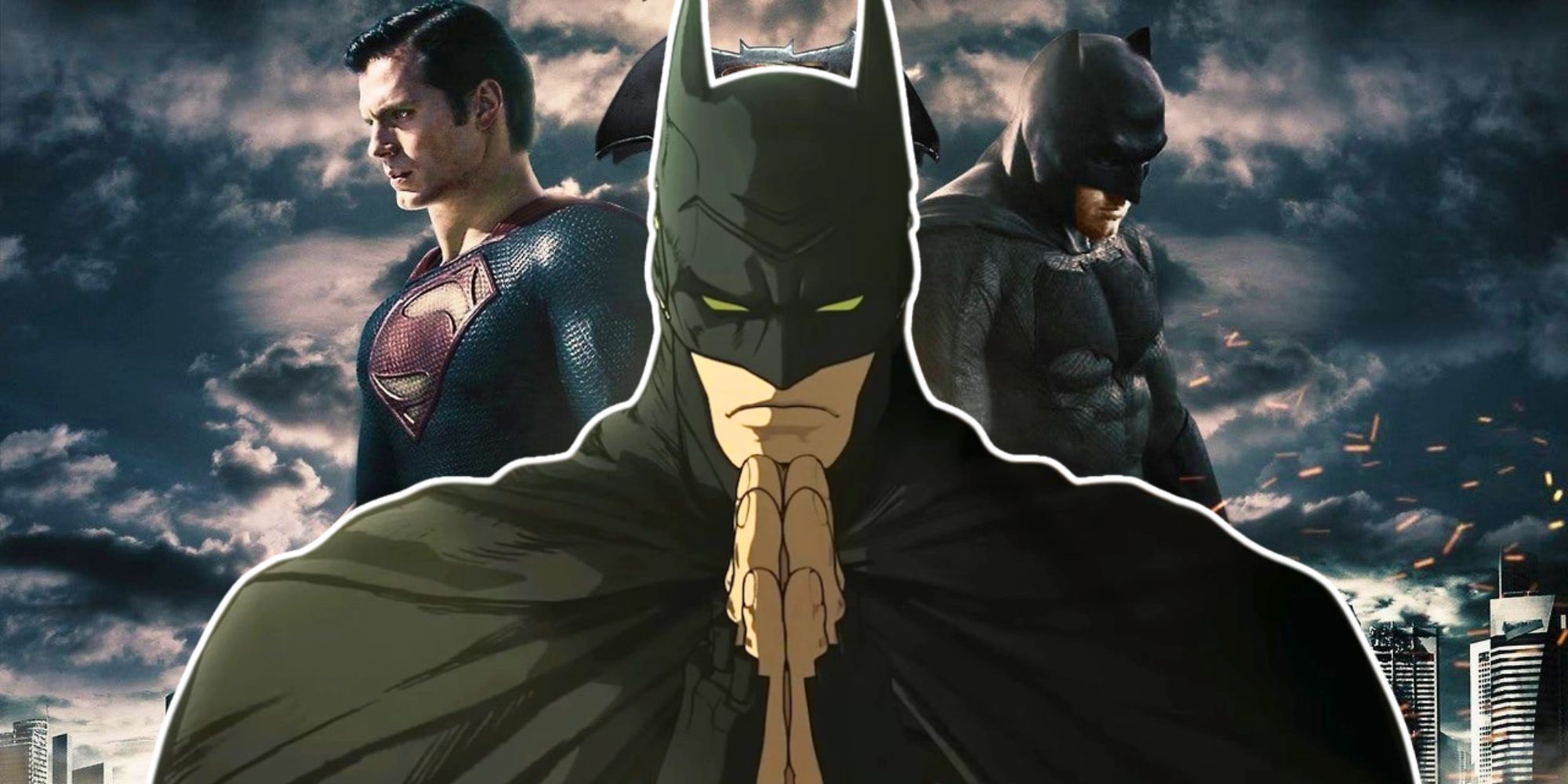
Related
The Newest Batman Movie Fixes 1 of Zack Snyder's Worst DCEU Mistakes
One high-octane anime movie set in a DC Elseworlds is fixing a major mistake that Zack Snyder made when he rushed things with his DCEU vision.
In 2016, the comic book movie genre was in a hypnotic trance, thanks to the MCU. At least twice a year, there were crowd-pleasing blockbusters that kept people laughing and cheering, never challenging viewers with anything too heavy. Zack Snyder's Batman v Superman: Dawn of Justice challenged those safe notions, delivering a film that forced the audience to confront their own beliefs and biases—something the world at large simply wasn’t ready for. After revealing himself to a world that hates and fears, Superman begins to question whether he made a mistake. After 20 years of fighting crime, Batman is burnt out and ready to die in a blaze of glory. Can they overcome their fears and stand together when the world needs them most?
